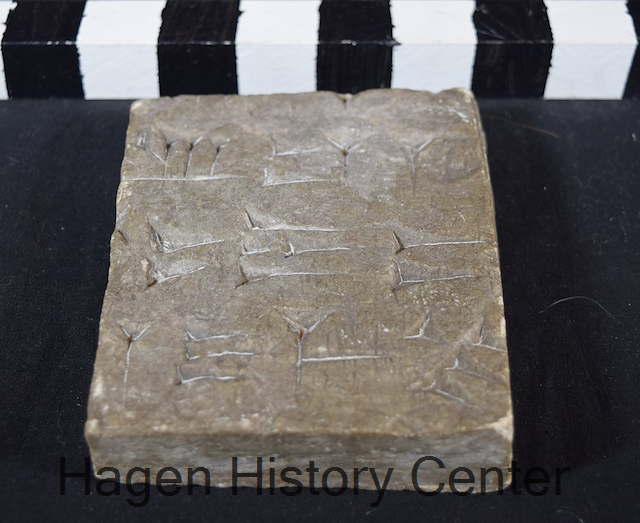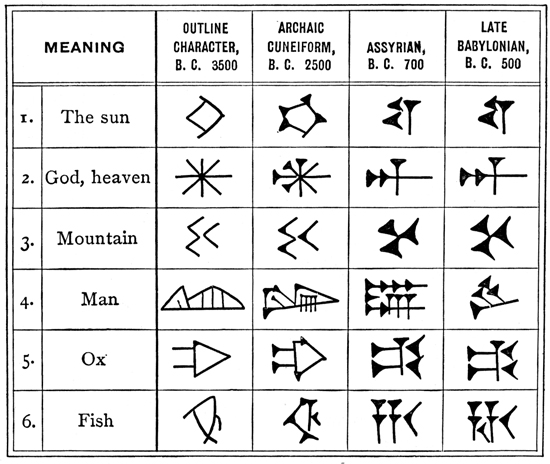Discovering that we have cuneiform tablets at the Hagen History Center inspired me to write about the history.

This cuneiform at the History Center was found on the surface of the ground behind the farmhouse on the Lindsey Farm in Springdale, that It is 7/10 mile north of Route 29 on Route 97, about 1-1/2 miles north of Waterford in 1939, according to the label on the back of the cuneiform.
Cuneiform tablets are some of the oldest examples of written language. It is an interesting topic as it spans several centuries and is the foundation of our modern written language. It finds its roots in the region of Mesopotamia, from the ancient Sumerian people.
The Sumerian language was the first of many varieties of cuneiform that we see today.
Cuneiform tablets are mainly clay and were written using a reed stylus of sorts to make the distinct markings. The last surviving tablet was written at some time around 75 CE, so it’s clear that this form of writing was very popular and commonplace. This form of writing is where we translated The Epic of Gilgamesh from. It is also the source of the first known customer complaint, which was referencing poor quality copper and advising others to not buy it. There were also historical accounts and even libraries of these tablets in the past.

Symbols, such as these, from theshorterword.com, reveal symbols used in writing.
Many museums possess countless tablets from this time. The British museum, as an example, has around 130,000. Each of these tablets could be 15 different languages that you would have to sift through if you had wanted to translate. A tablet could be Sumerian, Babylonian, Assyrian, Akkadian, Hittite, Old Persian, Elamite, and Urartian, which all vary in translations. If you don’t find the right translation, it could end up as a jumbled mess of letters that mean nothing. It is quite a difficult process to translate, as many of the symbols look similar or are the same used for different things. As Assyrian was the first, each was vaguely based off the original pictographs in a roundabout way.
In a way, this is similar to many languages now. Spanish, English, French, and German all share similar letters as an example. The only difference in letters is accent marks that are present in some and not present in others. This is an interesting commonality between the modern day and the ancient form of writing.
Research compiled from:
https://quatr.us/west-asia/cuneiform-mesopotamia-west-asian-writing.htm
https://www.theshorterword.com/cuneiform
 Grace is a history major at Mercyhurst University. She will be working with us for the summer semester as she gains experience in the museum field.
Grace is a history major at Mercyhurst University. She will be working with us for the summer semester as she gains experience in the museum field.
